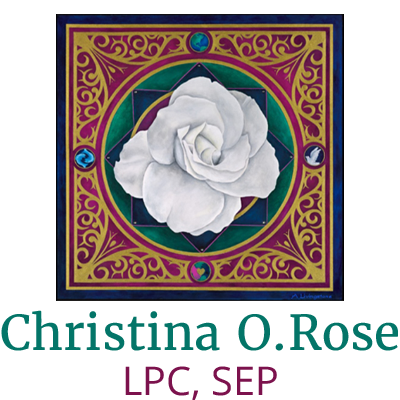From the Somatic Experiencing Trauma Institute
SOMATIC EXPERIENCING®
Somatic Experiencing® therapy is a body-oriented approach to the healing of trauma and other stress disorders. It is the life’s work of Dr. Peter A. Levine, resulting from his multidisciplinary study of stress physiology, psychology, ethology, biology, neuroscience, indigenous healing practices, and medical biophysics, together with over 45 years of successful clinical application. The SE™ approach releases traumatic shock, which is key to transforming PTSD and the wounds of emotional and early developmental attachment trauma.
THE SOMATIC EXPERIENCING® APPROACH
Offers a framework to assess where a person is “stuck” in the fight, flight or freeze responses and provides clinical tools to resolve these fixated physiological states. It provides effective skills appropriate to a variety of healing professions including mental health, medicine, physical and occupational therapies, bodywork, addiction treatment, first response, education, and others.
Trauma may begin as acute stress from a perceived life-threat or as the end product of cumulative stress. Both types of stress can seriously impair a person’s ability to function with resilience and ease. Trauma may result from a wide variety of stressors such as accidents, invasive medical procedures, sexual or physical assault, emotional abuse, neglect, war, natural disasters, loss, birth trauma, or the corrosive stressors of ongoing fear and conflict.
HOW IT WORKS
The Somatic Experiencing® approach facilitates the completion of self-protective motor responses and the release of thwarted survival energy bound in the body, thus addressing the root cause of trauma symptoms. This is approached by gently guiding clients to develop increasing tolerance for difficult bodily sensations and suppressed emotions.
Some of the ways I work with clients to connect with their body:
Connecting to the body sensations/emotions: One of the ways I work with clients is teaching them to connect more fully into their body as a path to healing. I do this through teaching clients ways to notice what’s going on in the body, and bring their attention to the sensations they are feeling. Many times the sensations are connected to unresolved emotions.
Cultural tendency to ignore our body: Our tendency, I believe, as a culture has been: If it feels bad, ignore it, suppress it, push it away, run from it. . . etc., through mind numbing activities like excess television and computer time, constant mind chatter, addictions and compulsivity’s just to name a few.
Why we don’t feel our emotions: We tend to turn away from those emotional feelings and sensations because we don’t like how they make us feel. And the belief if we just ignore them they will go away.
What happens when we ignore our feelings: The problem with not feeling those sensations and emotions is they don’t go away usually, and in fact, they tend to return over and over again and growing even bigger. Sometimes turning into illness, phobias, psychological issues.
We live in our heads, our mind: One of the most difficult things for folks to do it seems is to check in to their bodies to see what they are feeling. Even recognizing that they are experiencing sensations appears to be difficult, especially for folks that tend to spend a lot of time analyzing, worrying, stressing about life situations. It can be a challenge training ourselves to notice the sensations in our body as they come up.


